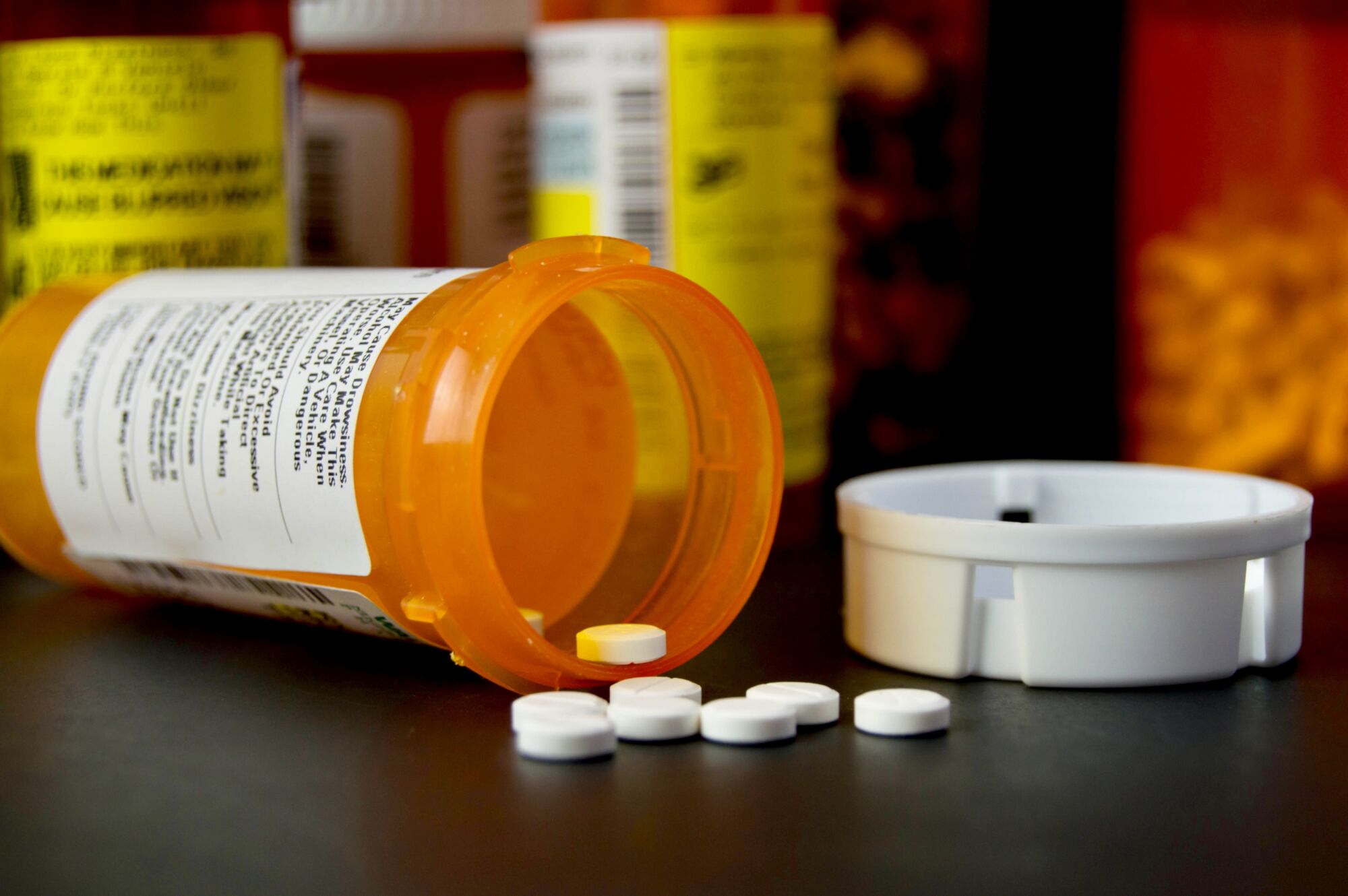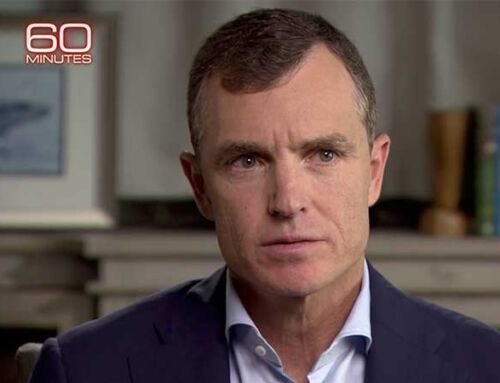How Baron & Budd helped secure this phenomenal amount for opioid-ravaged communities across America
For more than four decades, the nationally acclaimed law firm of Baron & Budd has achieved substantial regard for its work on cutting-edge litigation, trying hundreds of cases to verdict and settling tens of thousands of cases for hundreds of billions of dollars. The firm’s work spans numerous areas, including cases concerning unsafe pharmaceuticals and defective medical devices, asbestos and mesothelioma, drinking water contamination, wildfire and oil spill devastation, fraudulent banking practices, dangerous motor vehicles, federal whistleblower cases, and other consumer fraud issues. But perhaps no litigation has had a more significant impact on the greatest number of Americans than the firm’s efforts to secure funding for communities across the nation to help mitigate the devastation caused by the nationwide opioid crisis.
What Caused the Opioid Crisis?
The United States has experienced a significant rise in opioid abuse and deaths since the 1990s. The crisis has become so severe that health organizations have declared it a national emergency and referred to it as an “opioid epidemic.” This is largely due to the actions of pharmaceutical companies in the 2000s and beyond that ramped up production of prescription painkillers and encouraged doctors to prescribe them more frequently by claiming they were non-addictive and safe for patients. As a result, prescription opioids became the most common method of treating pain, surpassing safer alternatives such as physical therapy, exercise, and non-opioid medications.
As Americans increasingly relied on prescribed narcotics for pain management, they faced the unfortunate side effects of opioid use, such as addiction and increasing dose tolerance. Drug companies kept these side effects largely hidden from medical professionals and the public when promoting their pain medications. One such drug manufacturer, Purdue Pharma LP, admitted touting its extended release opioid products to doctors as “less addictive” than other opioids, resulting in one of the largest penalties ever levied against a pharmaceutical manufacturer, including a criminal fine of $3.5 billion and an additional $2 billion in criminal forfeiture. The actions of manufacturers that falsely promoted their addictive painkillers as safe, and those of distributors and retailers that failed to report excessive prescription sales, resulted in a surging number of overdoses and fatalities across the country, as patients found they needed ever increasing dosages to mitigate their pain and unwitting doctors were quick to refill opioid prescriptions.
The consequences of over-prescription of opioid pain medication didn’t stop there. When increasing tolerance resulted in prescribed drugs no longer having the desired effect, individuals turned to stronger narcotics or larger doses. When alarmed medical professionals stopped filling patients’ prescriptions, patients turned to street drugs such as heroin and, more recently, fentanyl, to not only mitigate their pain but to stave off the terrible symptoms of addiction withdrawal, further contributing to high overdose and death rates. The shift toward street drugs created a second and then third wave of the opioid crisis, exacerbating drug abuse across the country. These surges are depicted in the following diagram from the United States Centers for Disease Control and Prevention (CDC).

Burden on Municipalities Overwhelms
By 2015, the opioid epidemic was killing 33,000 people a year, affecting all 50 states, Washington D.C. and the U.S. territories. Considered the worst drug crisis in American history, overdose death rates have since surpassed car accidents and even gun homicides. From New England to the Rio Grande, illicit drugs were being purchased from suddenly prolific “pain clinics”, where addictive medications were being over-prescribed by unscrupulous doctors. Communities from Maine to California desperately searched for a way to counteract the opioid flood’s ability to shatter lives and spiral municipalities into financial ruin as they struggled to respond to unprecedented numbers of emergency overdose calls, care for the children of deceased and incarcerated opioid users, replace workforce personnel lost to drugs, and fund intervention and rehabilitation programs for an addicted public.
In 2016, the CDC changed the guidelines to make opioids harder to get, forcing even more addicted patients to turn to street drugs to stave off agonizing withdrawal symptoms and craving. In 2019, the White House Council of Economic Advisers estimated that the cost of the opioid epidemic to state and local governments exceeded $2.5 trillion in just the four years from 2015 to 2018. By 2022, CDC researchers estimated that a staggering 108,875 people had died in a single 12-month period, a stunning new death toll outpaced only by cardiovascular disease and cancer.
Early on, state attorneys general took note of the devastation in their jurisdictions and sought outside counsel experienced in representing municipalities across the country in complex litigation against multiple gigantic and well-financed corporations. These government entities needed to be expertly represented in litigation against the pharmaceutical manufacturers that claimed their medicines were not addictive, against the marketing companies that launched campaigns downplaying the addictive qualities of the drugs, and against the distributors and drug store chains that repeatedly violated guidelines and laws requiring them to report high volumes of prescriptions written and suspicious quantities of opioids dispensed.
First Lawsuits filed
As addiction rates and overdose deaths continued to surge, state and local governments addressed the issue not only through legislation and executive actions, but also through court challenges filed around the country that sought to hold certain opioid manufacturers, distributors, and supply chain entities legally liable for the epidemic. The first opioid lawsuits were filed against drug manufacturers in 2014. Additional public entities, ravaged by the toll taken on their communities, followed suit, filing hundreds of cases in jurisdictions all across the country.
In 2017, pursuant to a special federal procedure designed to streamline the handling of complex civil litigation, a federal opioid Multidistrict Litigation (MDL) was formed in the Northern District of Ohio in response to a motion drafted by Baron & Budd attorneys. Since the formation of the opioid MDL, the Judicial Panel on Multidistrict Litigation (JPML) has transferred more than 3,000 civil actions to a single federal district court overseen by Judge Dan Aaron Polster in an effort to coordinate the proceedings. All the while, state attorneys general continued to file their own lawsuits in various state courts.
Seeking a Remedy
 The law firm of Baron & Budd was retained by a number of cities, counties, states, Native American tribes and other public entities to represent them in federal and state courts against high-powered drug manufacturers, distributors and retailers. The skilled attorneys at Baron & Budd came to the table with decades of experience successfully representing municipalities large and small. They were up to the challenge of showing how big pharma and other corporate giants failed to report to authorities large, inconsistent and suspicious opiate drug orders, misrepresented the benefits and safety associated with long-term opioid use, failed to fully evaluate potentially risky opioid prescriptions before dispensing them, and employed fake third parties to endorse prescription opioid drugs. The goal of these lawsuits was to seek compensation for the role that manufacturers, distributors, retail pharmacies, and others in the supply chain played in the opioid addiction crisis across the country and to financially offset the enormous healthcare costs that states, counties and other government entities have had to absorb because of it.
The law firm of Baron & Budd was retained by a number of cities, counties, states, Native American tribes and other public entities to represent them in federal and state courts against high-powered drug manufacturers, distributors and retailers. The skilled attorneys at Baron & Budd came to the table with decades of experience successfully representing municipalities large and small. They were up to the challenge of showing how big pharma and other corporate giants failed to report to authorities large, inconsistent and suspicious opiate drug orders, misrepresented the benefits and safety associated with long-term opioid use, failed to fully evaluate potentially risky opioid prescriptions before dispensing them, and employed fake third parties to endorse prescription opioid drugs. The goal of these lawsuits was to seek compensation for the role that manufacturers, distributors, retail pharmacies, and others in the supply chain played in the opioid addiction crisis across the country and to financially offset the enormous healthcare costs that states, counties and other government entities have had to absorb because of it.
A Complex Legal Battle
According to the New York Times, the opioid multidistrict litigation has been the “most complex in American legal history.” Within just the federal MDL, there were more than 3,000 plaintiffs consisting of labor unions, tribes, cities, counties, and other entities. Apart from those cases, state attorneys general and other entities, such as hospitals, also filed lawsuits in state courts. The defendants in these cases consist of, among others, manufacturers, distributors, prescribers, and dispensers of opioids, with some entities falling into more than one category. Several of these defendants are massive corporations, with many listed among the top 10 in Fortune Magazine’s annual list of the 500 largest United States corporations by total revenue.
The theories of liability in such large-scale legal proceedings are likewise exceedingly complex and have varied from defendant to defendant and jurisdiction to jurisdiction. They have ranged from creating a public nuisance to false advertising to violations of federal and state controlled-substance laws. Some claims, such as allegations of Racketeer Influenced and Corrupt Organizations (RICO) Act violations, have sought joint and several liability against defendants who played different roles in the chain of distribution.
Jurisdictional issues have been equally complex and varied. Some cases were filed in federal court based on their diverse locations alone, while others were filed there because their claims rose federal questions, such as RICO violations. As the lawsuits have moved through discovery and, eventually, into bellwether trials, the complexity has only increased, with some cases ordered back to their original courts of jurisdiction for final resolution.
Up to the Task
In addition to the monumental task of coordinating thousands of discovery documents, numerous depositions, voluminous statistics and other evidence provided to and received from drug defendants among so many governmental plaintiffs in so many jurisdictions with differing laws and procedural rules, it was equally important to generate and maintain strong working relationships with municipal clients of all sizes and locations. Baron & Budd attorneys made a point of engaging the parties and their counsel as full partners to assist in fact-finding and strategic and tactical decision-making. Harnessing the expertise of locally elected officials, lawmakers, law enforcement agencies and health departments was critical to forging important communication streams that garnered significant institutional knowledge and experience to help in the fight against behemoth pharmaceutical defendants. Baron & Budd litigators excelled at forming these strong bonds and keeping mountains of documents and other evidence properly identified, organized and disseminated — and their contents quickly and accurately analyzed.
Not only were unparalleled organizational skills and strong interpersonal relationships between Baron & Budd attorneys and their clients crucial to successful litigation against numerous opioid defendants, the complexity of coordinating varied jurisdictional rules and procedures also commanded a superior knowledge of the law and smart innovation in seeking remedies for the communities harmed. Some court jurisdictions allowed Baron & Budd and its co-counsel to fight for punitive damages — over and above compensation for costs associated with treating opioid victims. Other courts allowed plaintiffs to seek only costs to abate the financial harm caused by the addiction crisis.
Enormous Costs to Calculate
 And how to determine the costs of the opioid crisis and the harm it has continued to cause? Even if the sale of opioids ceased completely and immediately, those already addicted and not in treatment would continue to seek out ways to stem their cravings and avoid the agonies of withdrawal, leading to additional overdose deaths and healthcare costs. The children of those addicted, incarcerated or deceased from opioid overdoses would still potentially need state support and care. The immense costs associated with funding law enforcement, emergency responders, incarceration, treatment programs and other healthcare needs until the addition crisis passes has been notoriously difficult to assess.
And how to determine the costs of the opioid crisis and the harm it has continued to cause? Even if the sale of opioids ceased completely and immediately, those already addicted and not in treatment would continue to seek out ways to stem their cravings and avoid the agonies of withdrawal, leading to additional overdose deaths and healthcare costs. The children of those addicted, incarcerated or deceased from opioid overdoses would still potentially need state support and care. The immense costs associated with funding law enforcement, emergency responders, incarceration, treatment programs and other healthcare needs until the addition crisis passes has been notoriously difficult to assess.
Through it all, Baron & Budd’s opioid litigation team leveraged their collective expertise to formulate realistic, equitable and judicious calculations of how best to mitigate harms and loss from an opioid crisis of unprecedented enormity and scale. The firm’s attorneys played key roles in the legal process, such as serving as lead attorneys in more than 70 lawsuits filed on behalf of municipalities against the largest pharmaceutical distributors in the United States, serving on plaintiff executive committees, and serving on the Ohio MDL settlement negotiation team, to help determine what abatement plans might cost and how to distribute proceeds fairly to affected communities across the nation.
A $26 Billion victory for Communities Nationwide
On July 21, 2021, Baron & Budd, along with a bipartisan coalition of state attorneys general, announced a conditional $26 billion national settlement in the Ohio opioid MDL with drugmaker Johnson & Johnson and three companies that distributed opioid painkillers, AmerisourceBergen, Cardinal Health and McKesson, as addiction and overdose deaths continued to soar. A coalition of law firms representing many of the state and local governments suing the four firms, including Baron & Budd, endorsed the settlement. “Our country’s opioid epidemic is a nationwide public health crisis that requires a nationwide solution,” the group, known as the Plaintiffs Executive Committee, said in a statement.
Coming Together for the Good of All
By February 2022, enough states and municipalities had signed on to the $26 billion deal to compel the four defendants to settle a multitude of lawsuits linked to claims that their business practices helped fuel the deadly opioid crisis. In all, 46 states and roughly 90% of eligible local governments signed on to the settlement agreement, according to the companies’ assessment. Johnson & Johnson, a consumer health products giant that manufactured generic opioid medications, agreed to contribute $5 billion to the settlement and to get out of the prescription opioid business in the U.S. altogether. The three drug wholesalers — AmerisourceBergen, Cardinal Health and McKesson — agreed to pay a combined $21 billion, with AmerisourceBergen paying $6.1 billion, Cardinal Health paying $6 billion and McKesson $7.4 billion.
The massive settlement resolved thousands of civil lawsuits that had been filed against the companies beginning in 2014 by local and state governments, as well as Native American tribes nationwide, and was structured in collaboration with local government officials to avoid a problem that arose with the $246 billion tobacco settlement in the 1990s. Much of that money was diverted to projects unrelated to the public health impacts of tobacco addiction. Plaintiffs were determined not to let such diversions happen again.
Once the deal was embraced by most states, the three drug distributors arranged to spread their $21 billion payments over 18 years, with the first installments distributed in October 2022. Baron & Budd was instrumental in bringing this money to state and local programs as quickly as possible in order to make meaningful progress in addressing the opioid crisis.
Another $20 Billion in Settlements
 Meanwhile, opioid-related lawsuits proceeded toward trial in state and other federal courts around the country. These were focused largely on pharmacy chains that sold large quantities of opioid medications directly to consumers. Baron & Budd’s experienced litigators prepared for those trials and engaged in vigorous settlement negotiations with just as much energy and intensity as they had in the Ohio multidistrict litigation.
Meanwhile, opioid-related lawsuits proceeded toward trial in state and other federal courts around the country. These were focused largely on pharmacy chains that sold large quantities of opioid medications directly to consumers. Baron & Budd’s experienced litigators prepared for those trials and engaged in vigorous settlement negotiations with just as much energy and intensity as they had in the Ohio multidistrict litigation.
By January 2023, five additional national settlements were proposed. The new settlement agreements involved CVS, Walgreens, Walmart, Teva, and Allergan. These proposed settlements would provide up to $20 billion in additional funding to states saddled with untenable opioid addiction- and overdose-related costs and included a requirement that drug companies change their corporate behavior to address issues raised in the litigation. Similar to the process that occurred with respect to the AmerisourceBergen, Cardinal Health, McKesson and Johnson & Johnson agreements, these new proposed settlements were structured to have an opt-in procedure before they became effective, in that communities in each state across the country had to decide whether to participate by the end of March 2023.
In all, Baron & Budd attorneys, along with co-counsel, negotiated with these drug company defendants to settle for the following amounts:
- CVS will pay $5 billion over 10 years.
- Walgreens will pay $5 billion over 15 years.
- Walmart will pay $3 billion within 3 years, but over 6 years if participation levels are not promptly met.
- Teva will pay $4 billion over 6 years.
- Allergan will pay $2 billion over 7 years.
This is another substantial sum for communities nationwide. The good that will come from money spent to abate the opioid crisis and reimburse state and local governments for the economic harm caused by the opioid epidemic cannot be overstated.
An Outstanding Achievement with More to be Done
Together with co-counsel, Baron & Budd has so far represented more than 700 public entities and eight states’ Attorneys General in litigation against prescription opioid manufacturers, distributors, and dispensers. To date, the firm’s experienced settlement negotiation team has negotiated more than $46 billion in settlements with some of the nation’s largest corporations. In addition to nationwide opioid settlements, Baron & Budd attorneys have also successfully negotiated combined settlements from pharmacies totaling $774 million for the state of New Mexico, $68 million from Kroger for the state of West Virginia, and $138 million from Walgreens for the state of Michigan.
This is a remarkable achievement for families whose lives have been irrevocably harmed by opioid addiction in communities all across the country — rural, urban and tribal nations alike – and for which the skilled opioid litigators at Baron & Budd are rightfully proud. Thanks in part to Baron & Budd’s expert legal guidance, states, counties and other government entities will now receive much needed funding to finance the overwhelmingly expensive task of treating the addicted and caring for children left behind in the tragedy’s wake. It will take years, maybe decades, to stem the tide of addiction’s grip on our nation, but now, with money flowing to communities everywhere, treatment centers can be built and properly staffed, programs can be expanded to aid families devastated by the untimely deaths of loved ones to overdose, and the healing of our afflicted nation can begin in earnest.





